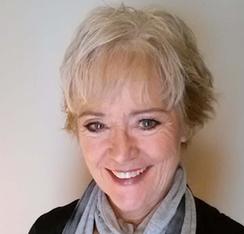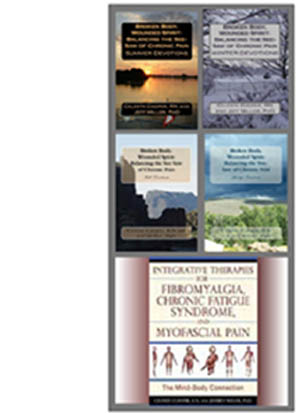by Celeste Cooper, RN
Chronic pain wears us down regardless of the source. There
are many painful disorders recognized in May, and I have discussed ways to
advocate and raise awareness, now it is time to say something about what we can
do to help our body not only function better, but feel better too.
Self-Responsibility, “…One thing that seems to have been forgotten to a surprising degree is the lifelong plasticity of most of our bodies’ tissues, and the manner in which our whole style of living molds this plasticity in innumerable ways that could never be anticipated by the coding of our DNA.
~ Deane Juhan, author of Job’s Body: A Handbook for Bodywork
The myofascia covers all muscles, and it is part of the
largest organ structure of the body, connective tissue. Is it any wonder so
many chronic pain conditions share myofascial dysfunction?
The continuum of connective tissue for the most part is not made
up from living cells, instead it is made up of fluids and fiber. Because of
this, we need to help it along either manually or by stretching, keeping the
life fluids going in and the waste fluids going out.
Massage therapy
Somewhere along the line, we forgot about the value of
touch. As one of our major senses, touch has more than one job. It provides information
to the brain regarding impending danger, and it provides feelings of comfort
and caring. Massage therapy provides helpful feedback to the body and the brain,
promotes relaxation, and relieves stress and physical pain and mobilizes stagnant
fluid in the lymph system which is dependent on physical movement and manual
stimulation.
The type of massage therapy depends upon your personal
tolerance. Until your brain learns to like it, it is prudent to start with soft
touch. As you progress, you should eventually be able tolerate bodywork that helps
with deep muscle and joint function.
Massage therapy versus bodywork
Massage is a manipulation of the body using hands on touch
therapy by stroking, kneading, and rubbing soft tissue. Massage is sometimes
accompanied by aroma therapy, hot rocks, and other modalities to help you
achieve a full body experience.
Bodywork on the other hand, is a distinct therapy and
requires advanced training. Bodywork targets specific areas of the anatomy that
are holding back the body as a whole. It is a systematic therapy with specific
goals for improving function and feelings of well-being. For instance, a good bodyworker
knows how to break down restrictive tissue, such as adhesions and scars, and
treat knotted up and tense muscles, thereby restoring the normal flow of blood
and lymph. When you see a bodyworker, it is prudent to start with the problem
that bothers you the most, pain, swelling, muscle weakness, etc.
The goal of both massages therapy and bodywork is to restore
balance to the mind-body connection.
Myofascial trigger point massage/bodywork
Myofascial pain syndrome (MPS) has been associated with
spinal disease, arthritis, sport injury, post surgical restrictions, migraine,
chronic pelvic pain (including vulvodynia and bladder disorders), teeth
grinding, TMJ, fibromyalgia, chronic fatigue syndrome, restless leg syndrome,
TMJ, bowel dysfunction, sexual dysfunction and impotence, and the list goes on
from there.
If you know you have co-existing myofascial pain syndrome which is identified as myofascial trigger points lasting more than three months, specific
bodywork is indicated. Read more here.
Myofascial trigger points (MTrPs) are called “neurological
imitators.” This explains why physicians who do not understand MPS are
perplexed by what they think are unexplained tingling, numbness, or sensations of
needles and pins, or other associated sensation abnormalities their patients often
experience.
Myofascial trigger point pressure therapy by someone trained
in the work of Travell and Simons, here,
is helpful
in this instance. You can also learn to
do self treatment using tools such as tennis balls, Theracane, or Knobbers, Yoga
ball, swim noodles, and a good book on self treatment, such as Clair Davies, The Trigger Point Therapy Workbook: Your
Self-Treatment Guide for Pain Relief, forward by Dr. David Simons. (May you
both RIP gentle souls).
Basically, any organ or body system can be affected by
myofascial trigger points (MTrPs), they can also obstruct blood circulation,
nerve transmission, and lymphatic flow. Learn more about MTrPs here.
Conclusion
Bodywork and
massage therapy comes in many shapes and sizes. The good news is that the
current level of thinking among medical practitioners is that it works!
The next hurdle
to overcome is getting insurance to cover it as a helpful medical tool. I want
you to know that people are fighting for the integration of these types of
therapies and more. Raising awareness,
such as what we do at the Pain Action Alliance to Implement a National
Strategy, here, will help in these
endeavors.
The goal of
and bodywork is to keep all body parts in motion with the least amount of
stress. Learn more about different types of bodywork, such as, Alexander
technique, craniosacral therapy, shiatsu, myofascial release, reflexology, Rolfing,
Rosen method, myofascial trigger point therapy, self treatment for myofascial
trigger points, spray and stretch, acupressure, Trager work, Vodder manual
lymphatic massage/drainage, and how to find the right, qualified therapist here.
You can also find helpful tips on massage and finding the
right therapist in the Fall Devotions of the Broken Body, Wounded Spirit:
Balancing the See-Saw of Chronic Pain, here.
*As with
everything medical, there are some risks for certain people. These include, fear
of touch, bleeding disorders or take blood-thinning medication, burns, open or
healing wounds, blood clots in the veins, fractures, severe osteoporosis
(brittle bone disease), or other severe bleeding disorders. If you are in
doubt, be sure to check with your physician.
All answers and blogs are
based on the author's opinions and writing and are not meant to replace medical
advice. For more information about the author see http://TheseThree.com
Check pub med for citations
As with any new therapy, discuss any risks for
your particular condition with your physician first.
Answers are based on the writings/books of the
author and are not meant to replace medical advice.












6 comments:
There are benefits of the massage therapy at the same time some ill effects as well .The person suffering with DVT or deep vein thrombosis, osteoporosis, bleeding disorder, cancer and recent fracture should not get massage therapy. It is also harmful to get a massage therapy when one is pregnant, has fragile skin, heart problem and others.
Massage Therapy West Kelowna
Thanks
Ryan Rusty
Hi i want to suggest you dextrose/water injections help with treating cervicothoracic myofascial pain. And these injections calm muscle and lessen nerves from firing pain.muscle pain reliefin Hong kong
I have been impressed with your message. Great view! your content was very pleasant and interesting to readers. Thank you very much for posting this.Keep up with good work. physical therapist colorado springs
Thank you for your post. I so agree human touch is a vital healing tool. Many insurance companies do not pay for massages. And in some areas a well trained therapist is rare. At one time I did save and treat my body to a massage but at this time due to osteoporosis and other back structure problems, not advised for me. I enjoyed your book Integrative Therapies
Thank you David. The role of the physical therapist can make or break a patient's perspective of the myofascia. When FM patients do not have a positive experience from physical therapy, I suspect it is because the PT does not understand the prevalence of myofascial pain syndrome, or have specific training, the same is true for physicians. The key in patient satisfaction, participation, and outcome is that close attention is paid to the centralization of pain from FM and the peripheral involvement of myofascial trigger points. When patients don't improve, we have to ask why that might be. I am thrilled that physical therapists are beginning to take a proactive role and specialized training, because when they don't have a clear understanding, they should not be caring for these patients, and when they do, patients will revere them as miracle workers.
Thank you for taking the time to read this blog. I am sorry it has taken me so long to get back to you. Our fourth and final book in the Broken Body Series will be released soon.
Thank you JoAnn. I appreciated your input and I can tell you that at PAINSproject.org we are working to improve massage and other integrative therapies as part of pain management, which means working with insurance companies to help them understand that these therapies will have a better patient outcome, cost less than some invasive treatments they now pay for, and save them money over the long run.
Thank you for reading the BIG book. I hope you will leave a review on Amazon, because we value the opinion of our readers. In healing and hope, Celeste
Post a Comment